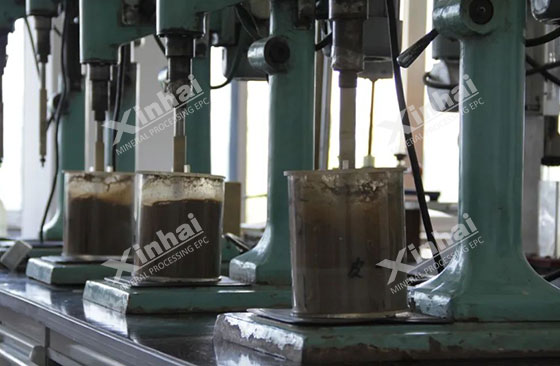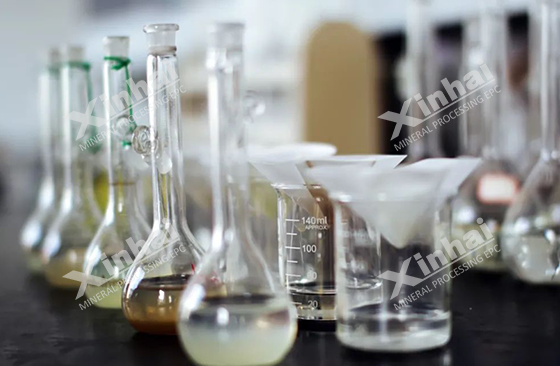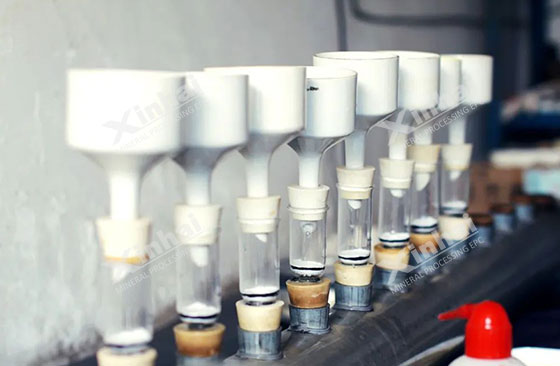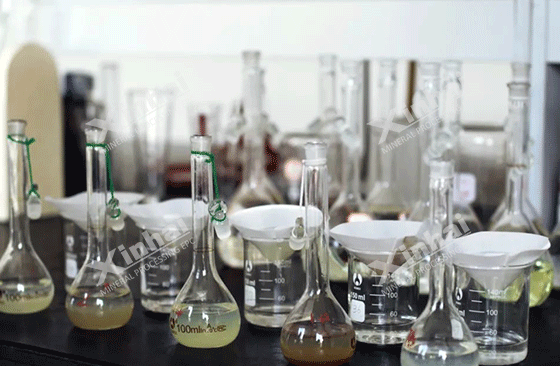
Silicon dioxide is an acidic oxide. There are many kinds of silicon dioxide ores in nature, such as quartz. From the physical properties, silicon dioxide has high hardness and melting point. In the field of mineral processing, the flotation of silicon dioxide is an important process, and the selection of appropriate mineral processing reagents is the key to achieving efficient flotation. This article will discuss in detail the types, characteristics and functions of silicon dioxide flotation reagents.

Currently, the commonly used flotation reagents for silicon dioxide include collectors, inhibitors, and regulators.
1. Silicon dioxide collectors
Collectors play a key role in silica flotation. Their main purpose is to enhance the hydrophobicity of the silica surface, making it easier to attach to the flotation foam, thereby improving the recovery rate and grade of silica. Common collectors include amine collectors, such as dodecylamine, octadecylamine, etc.
2. Silicon dioxide inhibitors
An inhibitor is a substance that slows down or prevents a chemical reaction, physiological process, or biological activity. In the silica flotation operation, inhibitors mainly play the role of inhibiting the floating of other impurity minerals and improving the selectivity of silica flotation. Common inhibitors include starch, dextrin, water glass, etc. Water glass has a remarkable effect in inhibiting silicate minerals and can effectively reduce the mixing of impurities.

An inhibitor is a substance that slows down or prevents a chemical reaction, physiological process, or biological activity. Its functions include inhibiting enzyme activity, regulating cell signaling pathways, and controlling microbial growth. Characteristics include specificity, reversibility or irreversibility, intensity of action and selectivity.
3. Silicon dioxide adjuster
The adjuster is mainly used to adjust the pH and ion composition of the pulp. Its purpose is to facilitate the environmental conditions for reagent adsorption and flotation and optimize the flotation effect. Commonly used adjusters include sodium carbonate, sodium hydroxide, sulfuric acid, etc. By adjusting the pH value of the pulp, the charge properties of the mineral surface can be changed, thereby affecting the adsorption and flotation effect of the reagent.

High selectivity: High-quality mineral processing reagents should have high selectivity for silica, be able to accurately adsorb on the surface of silica, and have weak adsorption on other minerals to achieve effective separation.
Good stability: The reagent should have good stability in the slurry, not easy to decompose or deteriorate, to ensure that it can play a stable role in the entire flotation process.
Environmental protection: With the increasingly stringent environmental protection requirements, mineral processing reagents should have low toxicity, low pollution, be environmentally friendly, and meet the requirements of sustainable development.

In short, the selection and application of silicon dioxide flotation reagents are crucial to improving mineral processing efficiency and product quality. In practical applications, it is necessary to comprehensively consider and select appropriate reagents based on the properties of the ore, the requirements of the mineral processing process, and environmental protection factors, and determine the appropriate reagent system through scientific experiments and optimization to achieve efficient, economical and environmentally friendly silica flotation.
To find out more about our products and solutions, please fill out the form below and one of our experts will get back to you shortly.